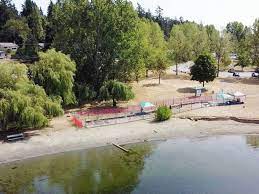Fault Line : Discovered On Canada’s Vancouver Island

A team of geologists, mineralogists, and Earth and ocean scientists affiliated with institutions in Canada, the U.S., and France recently discovered a 72-kilometer fault line on Canada’s Vancouver Island.
- Fault Line is a line determined by the intersection of a geological fault and the earth’s surface.
- A fault is a fracture or zone of fractures between two blocks of rock.
- This is caused by the stresses created as sections of a plate or two plates are moving in different directions.
- All faults are related to the movement of Earth’s tectonic plates.
- The biggest faults mark the boundary between two plates.
- Faults allow the blocks to move relative to each other.
- This movement may occur rapidly, in the form of an earthquake, or it may occur slowly, in the form of creep.
- Faults may range in length from a few millimetres to thousands of kilometres, such as the San Andreas Fault in California and the Anatolian Fault in Turkey, both of which are visible from space.
- Most faults produce repeated displacements over geologic time.
- The fault surface can be horizontal, vertical or some arbitrary angle in between.
- Earth scientists use the angle of the fault with respect to the surface known as the dip and the direction of slip along the fault to classify faults.




